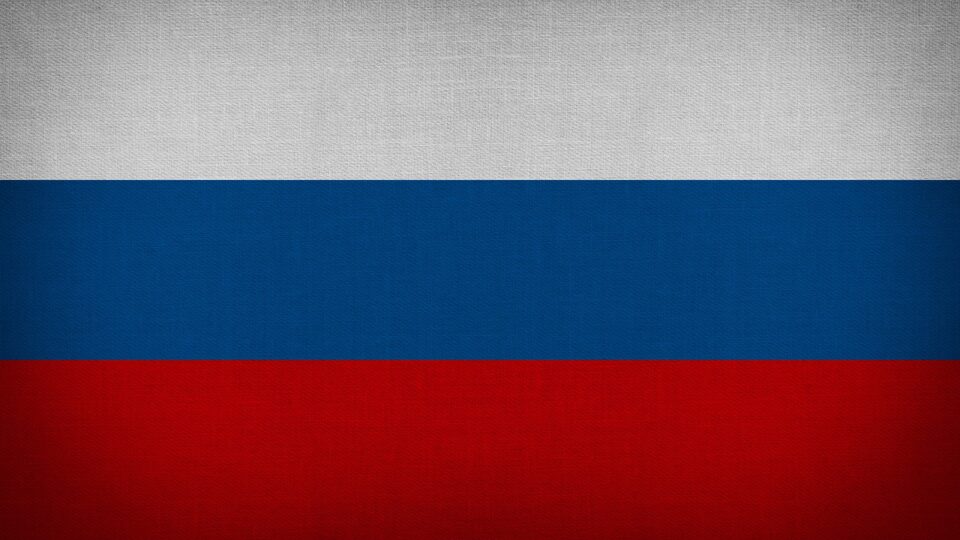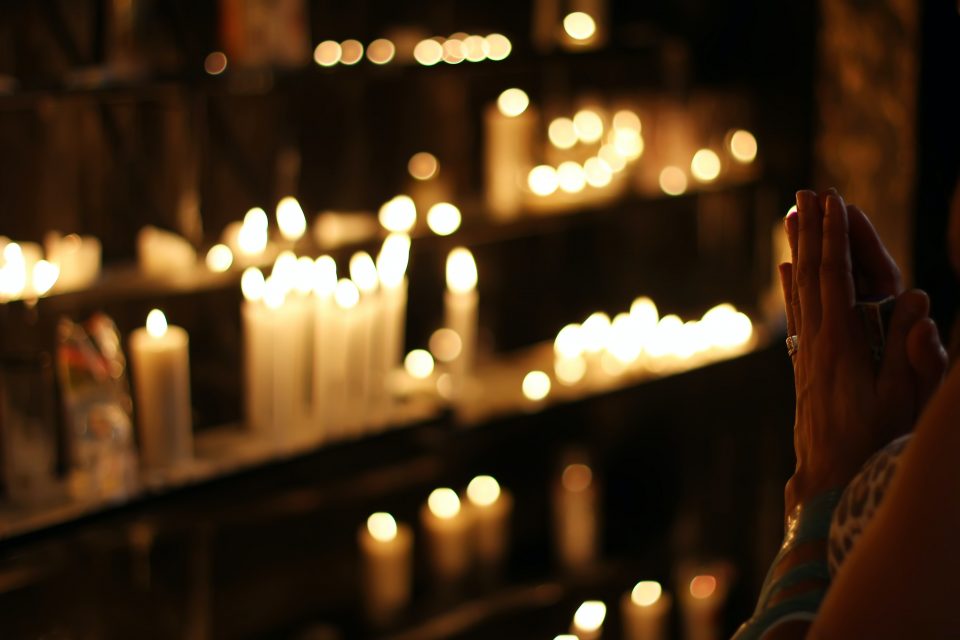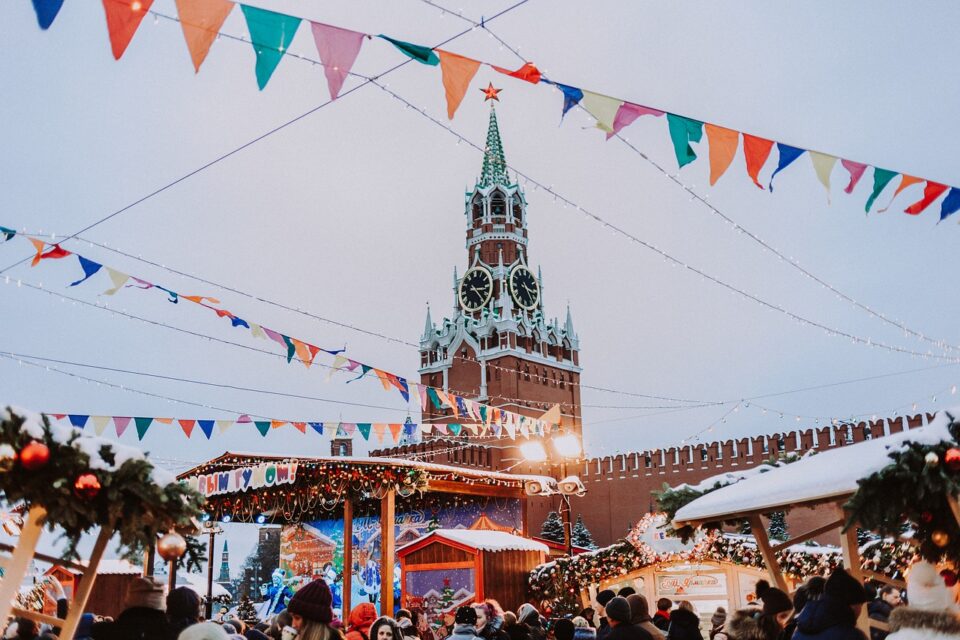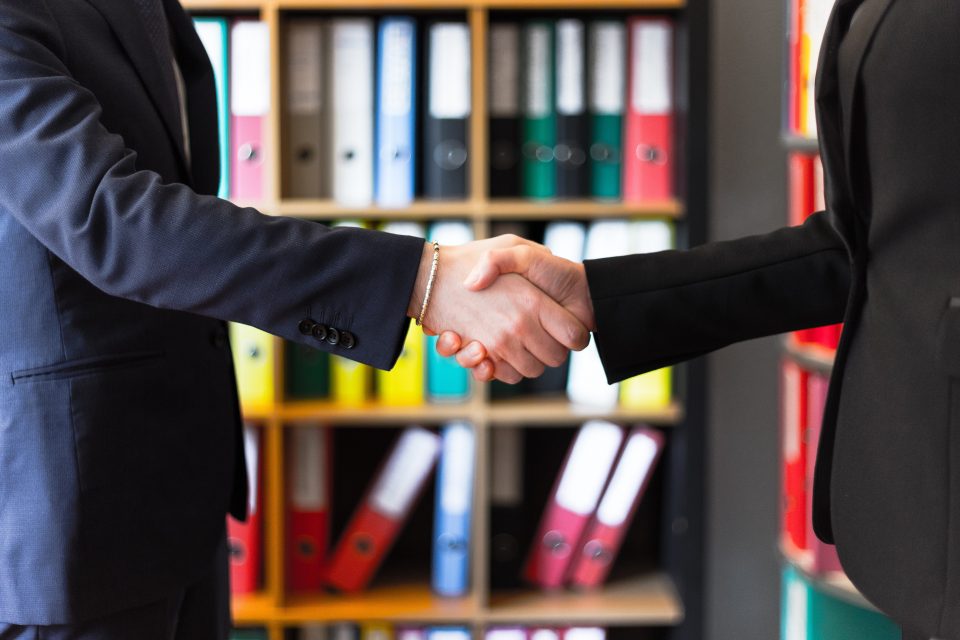
RUSSIA
GEOGRAPHY
Russia is a country that stretches over a vast expanse of Eastern Europe and Northern Asia. Once the preeminent republic of the Union of Soviet Socialist Republics (commonly known as the Soviet Union), Russia became an independent country after the dissolution of the Soviet Union in December 1991. Russia is a land of superlatives. By far the world’s largest country, it covers nearly twice the territory of Canada, the second largest. It contains Europe’s longest river, the Volga, and its largest lake, Ladoga. Russia is also home to the world’s deepest lake, Baikal, and the country recorded the world’s lowest temperature outside the North and South Poles.
Russia’s climate is extreme, with forbidding winters that have several times famously saved the country from foreign invaders. Although the climate adds a layer of difficulty to daily life, the land is a generous source of crops and materials, including vast reserves of oil, gas, and precious metals. That richness of resources has not translated into an easy life for most of the country’s people, however. Much of Russia’s history has been a grim tale of the very wealthy and powerful few ruling over a great mass of their poor and powerless compatriots.
HISTORY
In its origins Mongols invaded Kievan Rus, destroying cities including Kiev and Moscow. Tatars (as the Mongol invaders became known) established the Khan of the Golden Horde until 1480.
Ivan III, known as Ivan the Great, pursues a policy of “gathering the Russian lands”, a drive to annex all East Slavic lands. He rules, freeing Russia from the Mongols. The Battle of the Ugra in 1480 marks the end of Tatar dominance.
Ivan IV becomes the first tsar of Russia. Seeking to impose military discipline and a centralised administration, he institutes a reign of terror against the hereditary nobility.
- 1914: The rivalry between Russia and Austria in the Balkans contributes to the outbreak of the First World War, in which Russia fights together with Great Britain and France.
- 1917: The Russian Revolution involves the fall of the Tsarist regime and the prepared establishment of another, Leninist, which led to the creation of the Soviet Socialist Federal Republic of Russia. Tsar Nicholas II is forced to abdicate, and the old regime is replaced by a provisional government during the first revolution of February 1917. During the second revolution, in October, the Provisional Government was eliminated and replaced by a Bolshevik (communist) government.
- 1922: The Union of Soviet Socialist Republics (USSR) is officially established, which in 1924 is recognized by Great Britain, France and Italy.
- 1924: Death of Lenin. His body is embalmed. It is currently visible in a Mausoleum in the middle of Red Square.
- 1929-1953: Joseph Stalin becomes dictator, taking Russia from a peasant society to a military and industrial power. His totalitarian rule includes his Great Purge, beginning in 1934, in which at least 750,000 people were killed to eliminate opposition. He dies in 1953, following a stroke.
- 1939: World War II begins, and, in accord with a pact between Stalin and Adolf Hitler, Russia invades Poland, Romania, Estonia, Latvia, Lithuania and Finland. Germany breaks the agreement in 1941, invading Russia, which then joins the Allies (Great Britain and United States). The Russian army’s win at the Battle of Stalingrad serves as a major turning point in ending the war.
- 1945: Allied victory over Nazi Germany followed by swift establishment of Soviet hegemony in Central and Eastern Europe, and Balkans.
- March 5, 1946: In a speech, Winston Churchill declares “an Iron Curtain has descended across the Continent” and the Cold War (rivalry between the United States and the Soviet Union) grows as the Soviets promote revolution in China, Asia and the Middle and Near East. In 1949, the Soviets explode a nuclear bomb, hastening the nuclear arms race.
Soviet Union.
- March 11,1985: Mikhail Gorbachev is elected general secretary of the Communist Party. His reform efforts include perestroika (restructuring the Russian economy), glasnost (greater openness) and summit talks with U.S. President Ronald Reagan to end the Cold War. In 1990, he is elected president. In the same year he wins the Nobel Peace Prize for bringing the Cold War to a peaceful end.
- April 26, 1986: The Chernobyl disaster, the world’s worst nuclear accident, takes place at the Chernobyl nuclear power plant near Kiev in Ukraine. Resulting in thousands of deaths and 70,000 severe poisoning cases, the 18-mile radius surrounding the plant will remain unliveable for some 150 years.
- June 12, 1991: Boris Yeltsin wins Russia’s first popular presidential election, urging democracy.
- Dec. 25, 1991: Following an unsuccessful Communist Party coup, the Soviet Union is dissolved and Gorbačëv resigns. With Ukraine and Belarus, Russia forms the Commonwealth of Independent States, which most former Soviet republics eventually join. Yeltsin begins abolishing Communist-imposed price controls and reforms, and, in 1993, signs the START II treaty, pledging nuclear arms cuts. He wins re-election in 1996, but resigns in 1999, naming former KGB agent Vladimir Putin, his prime minister, as acting president.
- December 1994: Chechnya declares unilateral independence, beginning a decade of conflict with Moscow. Russian troops enter the breakaway republic of Chechnya to stop an independence movement. Up to 100,000 people are estimated killed in the 20-month war that ends with a compromise agreement. Chechen rebels continue a campaign for independence, sometimes through terrorist acts in Russia.
- March 26, 2000: Vladimir Putin is elected president, and is re-elected in a landslide in 2004. Because of term limits, he leaves office in 2008, when his protege Dmitry Medvedev is elected, and serves as his prime minister. Putin is then re elected as president in 2012.
- 2008: Dmitry Medvedev is elected President of the Russian Federation, while Putin becomes Prime Minister. In August, armed conflict breaks out with Georgia. In September, the financial crisis hits Russia. Oil prices fall rapidly, and this causes a considerable decrease in national income.
- 2014: Conflict with Ukraine. Russian forces invade Crimea, which will then vote in a referendum to join the Russian Federation. In December the ruble starts to fall quickly, losing half of its value in a few months.
- 2018: Putin is again elected as the Kremlin leader until 2024 in the presidential elections held in March, with support of more than 70%.


SOCIAL CULTURE AND RELIGION
During the Soviet era most customs and traditions of Russia’s imperial past were suppressed, and life was strictly controlled and regulated by the state through its vast intelligence network. Beginning in the 1980s, Mikhail Gorbachev’s reforms eased political and social restrictions, and common traditions and folkways, along with the open practice of religion, began to reappear. Many folk holidays, which are often accompanied by traditional foods, have gained popularity and have become vital elements of popular culture. Festivities generally include street carnivals that feature entertainers and children in traditional Russian dress. Boys usually wear a long-sleeved red or blue shirt with a round, embroidered collar, while girls wear a three-piece ensemble consisting of a red or green sarafan (jumper), a long-sleeved peasant blouse, and an ornate kokoshnik (headdress). Baked goods are ubiquitous on Easter, including round-shaped sweet bread and Easter cake. Traditionally, pashka, a mixture of sweetened curds, butter, and raisins, is served with the cake. Hard-boiled eggs painted in bright colours also are staples of the Easter holiday. The Red Hill holiday is observed on the first Sunday after Easter and is considered the best day for wedding ceremonies. In summer the Russian celebration of Ivan Kupalo (St. John the Baptist) centres on water, and celebrants commonly picnic or watch fireworks from riverbanks. Another popular traditional holiday is the Troitsa (Pentecost), during which homes are adorned with fresh green branches. Girls often make garlands of birch branches and flowers to put into water for fortune-telling. In the last month of summer, there is a cluster of three folk holidays—known collectively as the Spas—that celebrate honey and the sowing of the apple and nut crops, respectively. Russia also has several official holidays, including the Russian Orthodox Christmas (January 7), Victory Day in World War II (May 9), Independence Day (June 12), and Constitution Day (December 12). Women’s Day (March 8), formerly known as International Women’s Day and celebrated elsewhere in the world by its original name, was established by Soviet authorities to highlight the advances women made under communist rule. During the holiday women usually receive gifts such as flowers and chocolates. Although a wide array of imported packaged products are now found in Russian cities, traditional foods and ingredients remain popular, including cabbage, potatoes, carrots, sour cream, and apples—the principal ingredients of borsch, the famous Russian soup made with beets. Normally, Russians prefer to finish their daily meals with a cup of tea or coffee (the latter more common in the larger cities). Also popular is kvass, a traditional beverage that can be made at home from stale black bread. On a hot summer day, chilled kvass is used to make okroshka, a traditional cold soup laced with cucumbers, boiled eggs, sausages, and salamis. Vodka, the national drink of Russia, accompanies many family meals, especially on special occasions. The basic vodkas have no additional flavouring, but they are sometimes infused with cranberries, lemon peel, pepper, or herbs. Vodka is traditionally consumed straight and is chased by a fatty salt herring, a sour cucumber, a pickled mushroom, or a piece of rye bread with butter. It is considered bad manners and a sign of weak character to become visibly intoxicated from vodka.
Nowadays several religions coexist in Russia, but the most representative are Orthodoxy, Islam and Buddhism. The orthodox religion is the most widespread in Russia with over 41% of the population. To this figure, the percentage of the different orthodox movements generated by the schisms of the Orthodox Church must be added. Islam, with more than 5% of the population, is the second most widespread religion in the country. It is mainly found in the Caucasus, the Republics of Kabardino-Balkaria, Dagestan, Bachkirie and Tatarstan (Kazan is also the religious centre). Russian Buddhists live mainly near Lake Baikal in the Republics of Tuva and Buriazia, as well as in the even more distant European area of Russia, namely the Republic of Calmucchi. The percentage of Buddhists in Russia is around 0.5% of the population. The most important Buddhist Ivolginsky monastery in the Republic of Buriazia, is one of the rare places of worship built in Soviet times, moreover under the dictatorship of Stalin.
The Ivolginsky monastery is a datsan (Buddhist university monastery) and is home to one of the greatest mysteries of the last century. Inside it is located the body of the “Living Lama”. Khambo Itighelov is a historian Bancho Lama of the Buriata community who in 1926 sacrificed himself to save the souls of his community and died a year later. The Bancho Lama had told his followers, before they left the village, that he would have resuscitated after 20 years and so it was. His body was officially found and exhumed in 2002. The monk’s body was found in perfect conditions although embalming procedures had not been applied. The body of the Bancho Lama is placed in the Lotus position, maintains a constant temperature of 35.6 degrees, its hair continues to grow and its skin has the thickness and softness of that of a living being. No expert is able to explain this strange phenomenon; the faithful are convinced that Khambo is living another life in a different existential plan and has remained connected to his body on earth.
POLITICS
Until the late 1980s, the government was dominated at all levels by the Communist Party of the Soviet Union, which was all-powerful and whose head was the country’s de facto leader. Indeed, in the elections that were held, there was only a single slate of candidates, the great majority of whom were in effect chosen by the Communist Party.
The structure of the new Russian government differed significantly from that of the former Soviet republic. It was characterized by a power struggle between the executive and legislative branches, primarily over issues of constitutional authority and the pace and direction of democratic and economic reform.
The constitution provides for welfare protection, access to social security, pensions, free health care, and affordable housing; it also guarantees local self-governance. Nevertheless, national law takes precedence over regional and local laws, and the constitution enumerates many areas that either are administered jointly by the regions and the central government or are the exclusive preserve of the central government.
Under the Russian constitution the central government retains significant authority, but regional and local governments have been given an array of powers. For example, they exercise authority over municipal property and policing, and they can impose regional taxes. In comparison to the federal government, regional governments generally have inadequate tax revenue to support mandatory items in their budgets, which have barely been able to cover wages for teachers and police. The budgets of regional governments also are overburdened by pensions.
ECONOMY
On Aug. 9, 1999 Putin was plucked from obscurity and made prime minister. A short six months later Boris Yeltsin stepped down as president and Putin moved into his place. Russia was still reeling from the aftershocks of the collapse of the Soviet Union and the collapse of most of the major banks. GDP (gross domestic product) growth had been negative for a decade, bar a few months in 1998. The government was in a permanent budget crisis. Poverty had increased while life expectancy and income plummeted. The 1998 crisis was caused by the collapse of oil prices on the back of an Asian crisis a year earlier. But by 2000 oil prices began to recover from their low of $10 per barrel and over the next decade climbed inexorably to a peak of about $150. Putin was responsible for the first systematic attempt to reform Russia’s economy.
In 2000 he launched the so-called Gref plan (“Programme for the Socio-Economic Development of the Russian Federation for the Period 2000-2010”), but the plan was abandoned when the 2008 crisis struck.
The Russian economy is big, but the collapse of the Soviet Union saw its value and share of the global economy collapse. Russia’s share of the world’s economy rapidly recovered after Putin took over, rising from about 2% to about 4%. The global financial crisis of 2008 brought that process to an end and Russia’s economy clearly began to stagnate after 2013, a slowdown made worse by the collapse of oil prices in 2014.
Russia’s role in the global economy was at its peak in 2008, but Russia is now in danger of getting left behind as the rest of the world grows faster than Russia does. Booming growth before 2008 mainly reflected rising standards of living and consumption on the back of high oil prices. After 2014 consumer demand was stagnant and fixed investments were negative too as Russia’s economy moved into a post-oil boom phase where it ran up against deep structural problems.
Under Putin there have been several attempts at reform, most of which have failed. The first was the Gref plan launched shortly after he took office that was ended by the 2008 crisis. The next was the concept for the Long-Term Socio-Economic Development of the Russian Federation until 2020, but thanks to the global crisis it was never implemented.
IMPORT/EXPORT
IMPORT
- TEA
Three nations dominate Russian tea imports, accounting for nearly 70% of total volumes shipped. Sri Lanka comes out on top, supplying 29.91% of tea imports, followed by India with 23.52% and Kenya which shipped 15.57% of total tea imports to Russia in 2015.
- COFFEE
Coffee consumption in Russia is predicted to grow at a slightly higher rate than tea and Euromonitor predicts a compound annual growth rate of 2% annually until 2020.
- SOYBEANS
Imports of U.S. soybeans have been restricted due to phytosanitary concerns raised by the Government of Russia. Russia is estimated to have 8,000 to 10,000 food processing plants, but this growing sector lacks sufficient domestic supplies of key ingredients, such as soy products, prompting producers to seek the required food processing ingredients from other countries.
- WINE AND SPIRITS
Russia is the world’s 7th largest wine market with a growing consumption currently estimated at 10 litres per person per year. Since 2009, Russia has significantly increased imports of U.S. bourbon and rum.
EXPORT
Russian main exports are energy (oil and petroleum products, gas, coal), rolled steel, ferrous and nonferrous metals and minerals. The greater part of Russian exports belongs to oil and petroleum products. Other leading exports are natural gas, timber, fertilizers, machinery and equipment, armaments. The foreign countries receive from Russia over 300 million tons of oil and approximately 250 billion cubic meters of gas.

INTERNATIONAL RELATIONS
Who are Russia’s main allies?
Among the countries with which Russia has established mutual defence relations are, of course, those belonging to the Collective Security Treaty Organisation (CSTO), a defensive alliance created on 15 May 1992 by six nations belonging to the Commonwealth of Independent States: Russia, Armenia, Belarus, Kazakhstan, Kyrgyzstan and Tajikistan. The Organization’s statute provides for “collective protection in the event of a threat to security, stability, territorial integrity and sovereignty” of the member countries.
Abkhazia and South Ossetia, self-proclaimed republics recognized only by six members of the United Nations, have also signed agreements with Russia: according to the treaties, Moscow is committed to guaranteeing protection to these republics. In return, they will have to help Russia in the event of an attack.
Those mentioned so far are the countries with which military agreements are in force. However, there are also other States that Russia considers allies, such as Syria. Russia has sided with the government of Bashar al-Assad, providing political and military aid. Another significant example is China: the Asian giant is a member of the BRICS and the Shanghai Cooperation Organization, economic alliances which also include Russia. In addition, the Russian army regularly conducts joint military exercises with its Chinese colleagues.
Saudi Arabia
Vladimir Putin and the Saud crown prince Mohammed Bin Salman met in Riyadh on the occasion of the Russian President’s state trip to Saudi Arabia. The meeting was especially useful in order to strengthen the strategic partnership between the two countries. An almost unexpected alliance. In fact, even if the Soviets were the first to recognize the reign of the Saud in the distant 1926, until a few years ago it would have been unthinkable to see one of the friendly countries of the United States (Saudi Arabia) sitting around a table with one of Washington’s historical antagonists (Russia). What keeps Putin and Bin Salman together are the common energy interests. Russia and Saudi Arabia signed the charter for long-term cooperation between the Organization of Petroleum Exporting Countries (OPEC) and non-cartel oil producers (OPEC +). Oil is therefore the only glue that holds Russia and Saudi Arabia together, two of the world’s largest producers of black gold.
Russia’s role in the war in Syria
With the start of Turkey’s military operations, the Russian President has now remained the undisputed arbiter of Syria’s fate. Moscow has occupied the vacuum left by the United States and Russian troops are patrolling Manbij, in the governorate of Aleppo, where until a few days ago there were US soldiers. “We still don’t know what is behind the so fast withdrawal of the American forces – said a Russian officer – and, above all, why they gave us this territory rather than to the Turks, allies of NATO”. “But this is not a gift – he added – and now we must be careful because it could also be a last desperate [American] attempt to clash Russia with Turkey”. In the complicated Middle Eastern checkerboard, however, it is worth remembering that Putin was the only one capable of maintaining relations with all the main players: Saudi Arabia, Iran, Turkey or Israel. For the Kurds, moreover, the end of the American “protection” led them to seek in Russia the new mediator capable of satisfying their aspirations.
Now a delicate game of balancing opposing interests begins for Putin. If on one side there is Erdogan, on the other side there is Assad, the ally that has allowed Russia to become a major international power again. The Turkish Prime Minister has said that he has received reassurances from Russia that the Syrian army will keep the Kurds away from the border. A promise capable of stopping the ongoing offensive, in addition to the temporary ceasefire granted by Erdogan to Trump to allow Kurdish fighters to retreat south. Putin, in short, will attempt to take on the role of peacemaker in the bloody Syrian war.
Turkey
The agreement between Russia and Turkey on northern Syria. Turkish President Erdogan and Russian President Vladimir Putin have reached an agreement that allows Ankara to control an area of 30 kilometres on the border between Turkey and Syria and forces the Kurds to leave the territory in which they have lived for decades. Putin also granted Erdogan the management of another area to the east, between Tal Abyad and Ras al Ain, and offered to send some troops to help him patrol the border areas.
Both Turkey and Russia emerge fortified from this negotiation. The first has in fact obtained exactly what he wanted: the “neutralization of the Kurdish threat”, to put it in Erdogan’s words, and control over a territory where he wants to transfer all the refugees who emigrated to the country after the outbreak of the civil war in Syria in 2011. The latter, however, managed to further consolidate its influence in Syria at Washington’s expense. The condition of the Kurds, who until a few weeks ago actually ruled a semi-autonomous territory and are now forced to retreat, is causing much discussion in the West. A Kurdish man set himself on fire in Geneva, in front of the headquarters of the United Nations High Commissioner for Refugees, in protest against what he considers a betrayal of his people.
